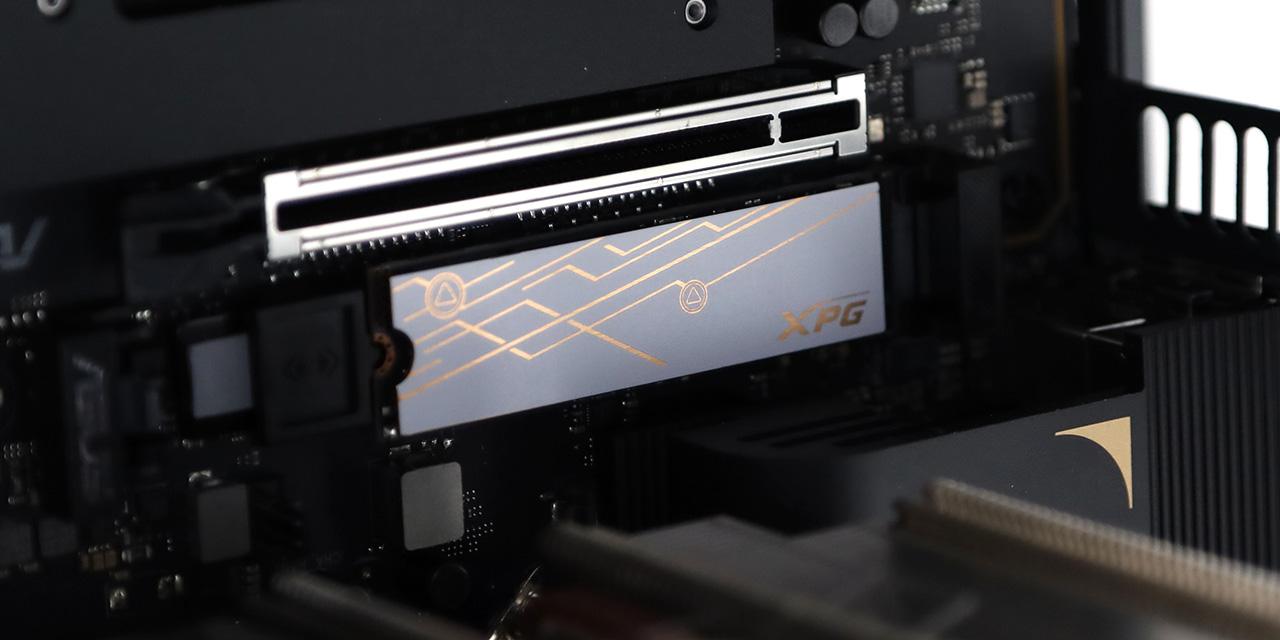Page 3 - Physical Look - Inside
Consistent with its exterior, the interior of the Lian Li PC-B12 is also well furnished, with everything as aluminum as it could get both material-wise and appearance-wise. Well, to be absolutely fair, Lian Li is the expert in aluminum design and manufacturing, so it is not like we expecting anything else anyway, haha. As you can see in our photo above, the layout is quite standard as far as a mid-tower with a bottom mounted power supply is concerned. What we have here is a distinct but fixed motherboard tray in the standard location, power supply bay at the bottom, hard drive rack on the right near the bottom, and two externally accessible 5.25" drive bay on top. Because the drive rack does not extend to the area directly adjacent to the PCI Express graphics slots on your motherboard, the length of the video card is limited only by the full length of the case, which is 360mm. No video card is that long, so rest be assured this chassis can and will accommodate anything you throw at it.
The Lian Li PC-B12 is able to accommodate mITX, mATX, and ATX motherboards. Cables can be run through four well placed openings around the motherboard tray. The riser mounting holes are labeled 'A' for ATX motherboards only; if you have a mATX motherboard, then you will need to figure out which holes to use yourself. ATX motherboard risers are pre-installed for you out of the box. One 120mm rear exhaust fan is situated around the CPU socket area for maximum cooling performance. All stock fans feature a 3-pin motherboard header, but Lian Li made sure everyone's bases are covered with included 4-pin Molex adapters as well.
As shown in our photo above, we can spot a large rectangular opening on the motherboard tray for easy aftermarket heatsink backplate installation without removing the motherboard itself from the chassis. Unfortunately, it seems the company is a bit behind the times, since it is not large enough to accommodate modern motherboards with shifted CPU sockets -- which is pretty much every Intel processor since Lynnfield core processors came along back in 2009. I think it is a good idea for them to either enlarge the opening, or move it a bit to the right, otherwise it is pretty much useless to the end user. They have enlarged it slightly since the last time we have covered a Lian Li case, but it is still not perfect yet.
Because the Lian Li PC-B12 features a bottom mounted power supply bay, the chassis platform is raised about 1.5 cm off the ground to accommodate units with fans at the bottom. Inside the chassis, two long rails with foam strips on top elevates the power supply up a further centimeter, just to ensure enough air is made available to your PSU. The ventilation grille has an externally removable dust filter pre-installed, so you won't need to worry about nasty stuff clogging your fans down the road. The power supply bay has full access to the area behind the motherboard tray, since the motherboard tray does not extend into the area next to it. This is very convenient for running cables around your computer during the assembly process.
I am also very pleased by the tool-free expansion card locking mechanism on the PC-B12. The robust metal clips not only provides an extremely secure installation, but it is also very well built for maximum durability down the road. I have used cases with plastic locks in the past, and trust me -- they break quite easily. This is certainly one of the best tool-free installation systems I have used in the last little while. I have complained in my PC-Z60 review that the metal clips cannot remain in its unlocked position when the case is flat on the ground, unless you explicitly hold it up. Lian Li took notice of it, and the PC-B12's revised mechanism, despite having the same experience, exhibits no such issue.
Two 140mm front fans are attached to a detachable rack via a set of vibration dampeners, and draws air into the case directly over the hard drive rack and graphics card location. The fan rack is attached to the chassis frame by two thumbscrews, which can be easily removed for cleaning or swapping. Out of the box, the 3-pin fan cables are configured to come out the bottom of the rack. During installation, I found it would have been extremely helpful if Lian Li extended the length of the top fan cable, because it won't reasonable reach any headers on your motherboard. Using the included 4-pin Molex adapter will permit a connection to your power supply, but if you insist on connecting it to your motherboard, you can detach the top fan and rotate it to have the cable route through the top instead. As there are more intake than exhaust fans, this will create a positive pressure inside the PC-B12, which will help in preventing your computer from sucking in dust through unfiltered vents.
Optical drive installation involves a quick swing of the locking lever at the top. It works, but it is not a very secure installation, because the other side will still feel kind of lose. Lian Li can definitely improve this tool-free design in my opinion. Meanwhile, at the bottom is a hard drive rack that can accommodate up to three 3.5" and one 2.5" HDD or SSD. An optional hot swap backplane can be purchased from the company. I am not a big fan of the fact that it can accommodate only one 2.5" drive; I may be the exception, but my last PC had three SSDs installed -- more flexibility in this area is definitely going to be a desirable trait.
Here is a look at other side, where most people do not usually pay attention to. In my opinion, the back of the motherboard tray is quite fundamental to good cabling. This is especially held true with many modern cases like the Lian Li PC-B12, since the designer actually expects you to run cables through this section. In my opinion, the company can definitely increase the gap by quite a margin here; the amount of room between the side panel and motherboard tray is very slim, especially when you have to make room for the noise insulation material. I am not entirely sure why Lian Li took out the integrated vertical cable routing column found on the PC-Z60 and LanCool PC-K9 either. I found that extremely useful. Either way, the gap here is simply too small for typical power supply cables. I will talk about this a little more on the next page.
Page Index
1. Introduction, Packaging, Specifications
2. Physical Look - Outside
3. Physical Look - Inside
4. Installation and Conclusion





